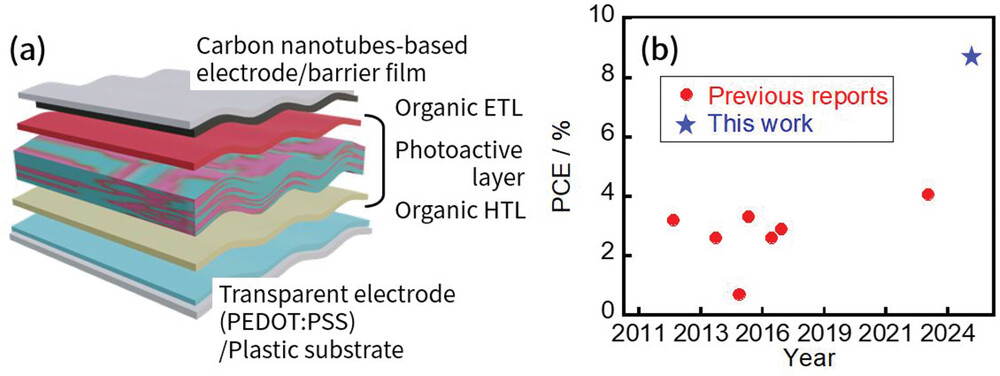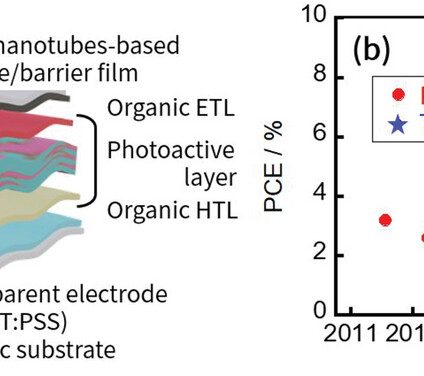Thanks to a transparent polymer electrode and a new lamination method, fully organic solar cells have achieved a record power conversion efficiency of 8.7%—more than double the previous record

Fully organic solar cells are making significant strides. A large team of scientists from Kanazawa University in Japan has propelled this technology forward, doubling its power conversion efficiency in a single leap, from just 4% to over 8%. The breakthrough comes from a multilayered approach focused on improving the electrodes, traditionally a weak point in performance. To fully understand the importance of this achievement, it helps to take a step back.
Fully organic solar cells: the challenges
Fully organic solar cells are a subcategory of polymer photovoltaics. Unlike more advanced organic cells, which often incorporate toxic inorganic materials in their electrodes and transport layers, 100% organic units offer a much greener alternative.
However, avoiding these hazardous materials, such as indium tin oxide (ITO), results in significantly lower efficiency. Until now, the sector’s record for fully organic technology stood at around 4%.
The main challenge? Few organic transparent electrodes exhibit the conductivity required for solar applications. Enhancing their conductivity often involves using strong acidic dopants, which can damage plastic substrates. High-temperature annealing processes (>150 °C) also pose a barrier to scalability.
A team led by Professor Masahiro Nakano, in collaboration with researchers from REIKO and Queen’s University in Kingston, Canada, has now found a solution.
A new electrode for fully organic photovoltaics
The group developed a transparent electrode based on the conductive polymer PEDOT:PSS, produced at lower temperatures (80 °C) without the need for acids or bases. This new electrode exhibits sufficient conductivity for thin-film solar cells.
The researchers also tackled a second major hurdle: stacking multiple layers in a thin-film solar device without damaging the underlying organic films. They developed a lamination method for carbon nanotube electrodes. This technique involves separately forming electrodes on the cell’s barrier films and then attaching them to the device, preventing damage to the lower organic layers during electrode fabrication.
By combining the new transparent organic electrode with the new lamination technique, the research team successfully created fully organic solar cells with a power conversion efficiency of 8.7%—more than twice that of previous models. This advancement marks a crucial step toward the practical application of fully organic solar technology.
The study, Unlocking High-Performance in All-Organic Solar Cells by the Development of Organic Electrodes with No Acid and High-Temperature Treatment and the Effective Preparation Thereof on Organic Multilayer Films, was published in Advanced Functional Materials.












